Understanding and Overcoming Autistic Exhaustion
A Deep Dive Into Autistic Burnout
Autistic burnout is an increasingly recognized condition that affects many autistic individuals, particularly those who mask their traits or face prolonged stress and demands. It is a complex syndrome characterized by persistent exhaustion, loss of skills, and sensory sensitivities, significantly impacting mental health and daily functioning. This article aims to unpack the characteristics, causes, recognition, and support strategies for autistic burnout, empowering individuals and their support networks to navigate this challenging experience effectively.
What Is Autistic Burnout?
What is autistic burnout?
Autistic burnout is a long-lasting state of intense physical, mental, or emotional exhaustion that typically lasts for three months or more. It results from persistent stress, ongoing demands, and a mismatch between expectations and an individual's abilities, especially when adequate support is lacking.
This condition often involves a noticeable decline in functional skills, such as challenges with communication or daily tasks. People experiencing burnout may find themselves with reduced tolerance to sensory stimuli, emotional dysregulation, and increased withdrawal from social activities.
The impact on daily life and mental health can be profound. Individuals may struggle with routine activities and experience heightened feelings of hopelessness or despair. Physical symptoms like fatigue, headaches, and sensory overload are common, alongside cognitive issues such as difficulty concentrating or remembering.
Causes of autistic burnout include masking one's true traits, societal pressures, sensory overload, major life changes like graduation or diagnosis, and a lack of appropriate support or accommodations. These factors contribute to feelings of exhaustion and can lead to mental health challenges including anxiety and depression.
Common signs include avoiding demands, increased meltdowns or shutdowns, and difficulty accessing previously habitual skills. Recognizing these signs early is crucial for managing and recovering from burnout.
Strategies for managing and preventing burnout focus on reducing demands, establishing supportive environments, practicing self-acceptance, and creating spaces where individuals can be themselves without judgment. Support from mental health professionals familiar with autism can facilitate recovery and help build resilience against future episodes.
Recognizing the Signs and Symptoms
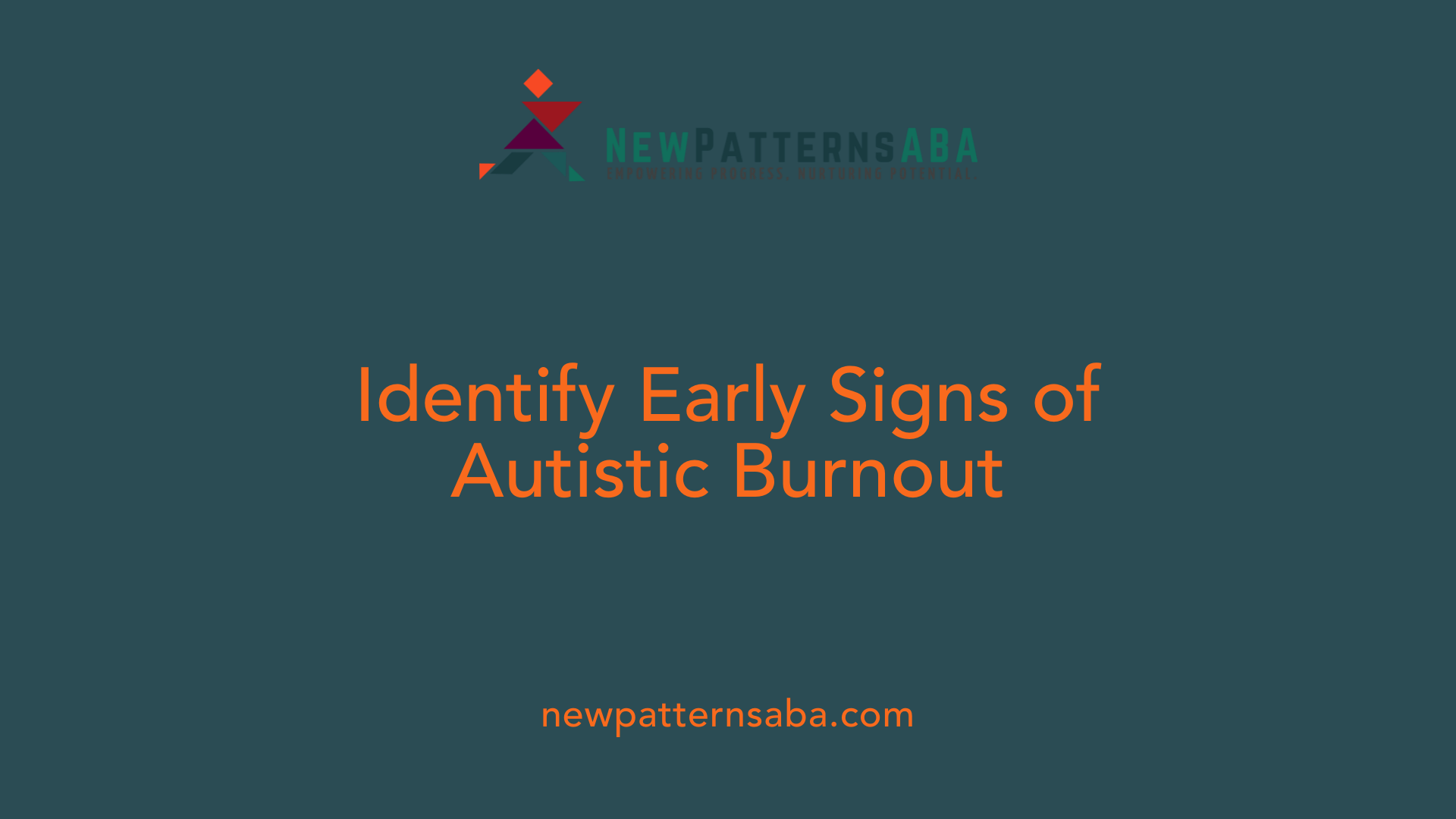
What are the common signs and symptoms of autistic burnout?
Autistic burnout manifests through a variety of physical, mental, emotional, and behavioral signs. Physically, individuals often experience persistent tiredness, difficulty sleeping, muscle tension, headaches, or stomachaches. These symptoms reflect the deep exhaustion that can last weeks or even months.
Mentally, burnout impacts concentration, memory, and decision-making processes. People may struggle with routines they once handled with ease and find it hard to focus on tasks or think clearly. Cognitive fatigue can lead to delays or regression in skills that were previously developed.
Sensory sensitivities tend to intensify during burnout. This means heightened reactions to light, sound, touch, or other sensory inputs. People might feel overwhelmed by stimuli that usually wouldn't bother them, leading to withdrawal or shutdown.
Emotionally, many experience heightened anxiety, feelings of hopelessness or despair, and emotional overwhelm. Crises or meltdowns may occur more frequently, often as a response to sensory overload or social demands.
Behavioral changes are also evident. Individuals often withdraw from social activities, avoid interactions, and retreat into solitude. They might engage in more stimming or repetitive behaviors, and exhibit difficulty with emotional regulation.
Overall, these signs signal that the individual is overwhelmed by cumulative stress, sensory overload, and masking efforts. Recognizing these symptoms early can help in implementing supportive strategies to facilitate recovery and prevent further exhaustion.
Causes and Risk Factors
What are the causes and risk factors associated with autistic burnout?
Autistic burnout is mainly caused by the ongoing demands placed on autistic individuals, especially when these demands lead to prolonged stress. A significant contributor is masking or camouflaging, where individuals suppress their natural traits to fit into societal expectations. This effort is draining over time and depletes emotional and physical resources.
Sensory overload, which occurs when the environment provides more stimuli than an autistic person can process comfortably, also plays a crucial role. Overexposure to noisy, crowded, or chaotic settings can lead to exhaustion. Environmental factors such as lack of accommodations or understanding in workplaces, schools, or social settings further increase stress.
Societal expectations and internalized ableism constitute another layer of risk. When individuals internalize negative beliefs about autism, they may push themselves harder to meet perceived standards, worsening their exhaustion.
Life transitions, such as puberty, graduation, or receiving an autism diagnosis, often trigger increased stress and demand adjustments. Systemic barriers like stigma, discrimination, and limited access to support services make it even more difficult for autistic individuals to manage these changes.
Risk factors include high societal and personal expectations, difficulty obtaining appropriate support, and mental health conditions like anxiety or depression that can amplify feelings of fatigue. Challenges with executive functioning, such as organizing tasks or managing time, also exhaust individuals further.
Moreover, marginalized groups within the autism community—such as women, BIPOC, and transgender people—face additional systemic obstacles and social pressures that heighten their vulnerability to burnout.
In conclusion, autistic burnout results from a mix of personal struggles, societal pressures, and environmental challenges that overwhelm an individual's ability to cope, leading to deep physical and emotional exhaustion.
Differentiating from Other Conditions
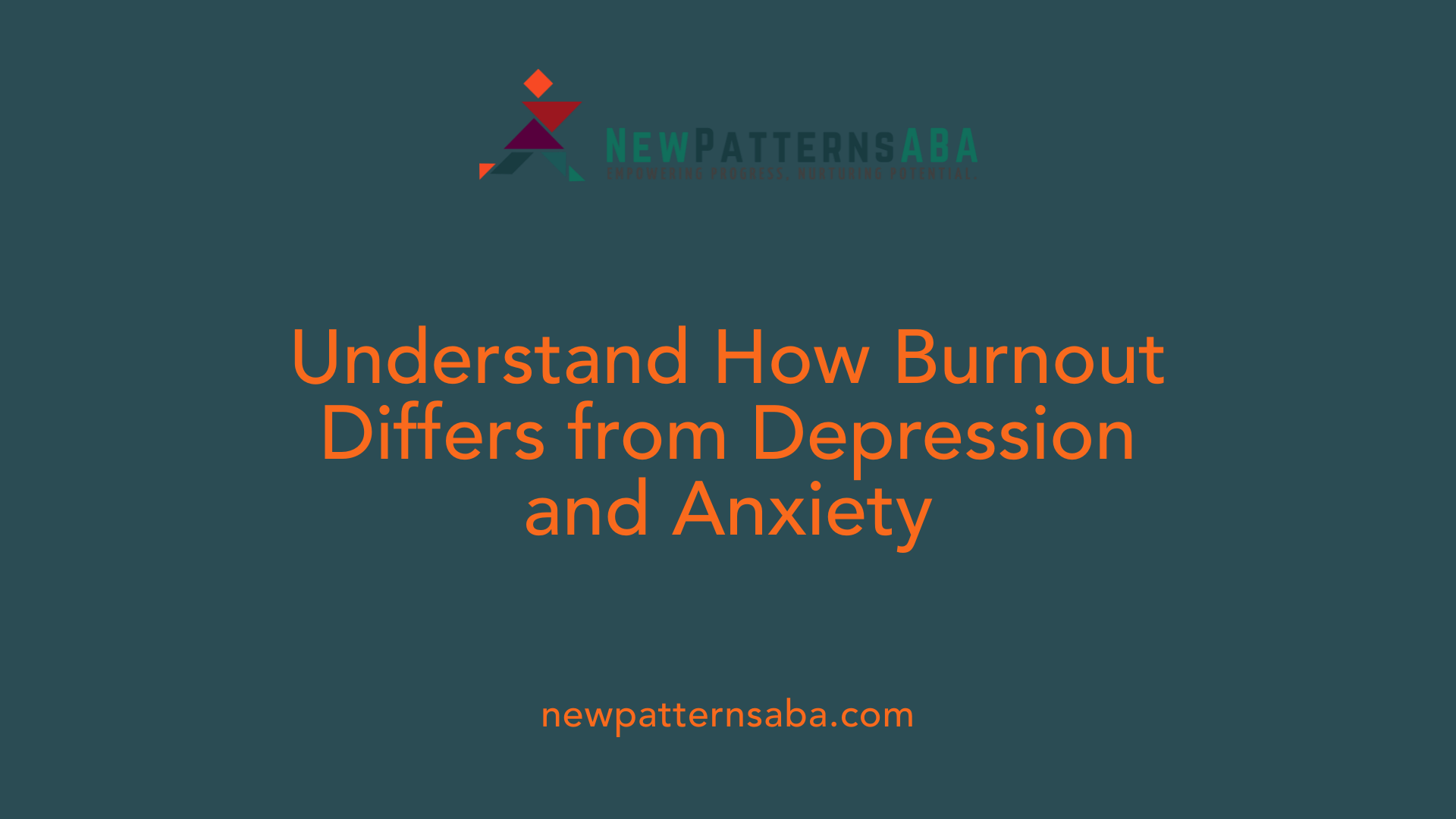
How can autistic burnout be distinguished from other conditions like depression or anxiety?
Autistic burnout has unique features that set it apart from conditions like depression and anxiety, although overlaps in symptoms do exist. It mainly results from prolonged stress, sensory overload, masking, and environmental demands, causing a long-lasting sense of exhaustion and loss of skills.
While individuals experiencing burnout may also feel tired or anxious, the root causes differ. Burnout specifically stems from external stressors rooted in the challenges and expectations associated with autism, whereas depression often involves persistent feelings of sadness, worthlessness, and biochemical factors. Anxiety typically relates to worry or fear about future events or social judgment.
The symptoms of burnout include heightened sensory sensitivities, severe exhaustion after periods of masking or overwhelm, withdrawal from social activities, and difficulty with daily functioning. Importantly, burnout’s visibility may be less intense externally but can feel overwhelming internally over weeks, months, or even years.
Recognizing these distinctions is essential for effective support. Professionals familiar with autism can help identify whether symptoms are driven by external overload or internal mood states. This understanding ensures appropriate interventions—such as environmental adjustments, sensory regulation, and self-care for burnout—not solely mental health treatments targeting depression or anxiety.
In summary, although overlaps exist, autistic burnout is characterized by its connection to environmental and sensory overwhelm specific to autism, making it distinguishable with careful assessment. Proper identification leads to targeted strategies that facilitate recovery and help manage conditions more effectively.
Supporting Strategies for Prevention and Recovery
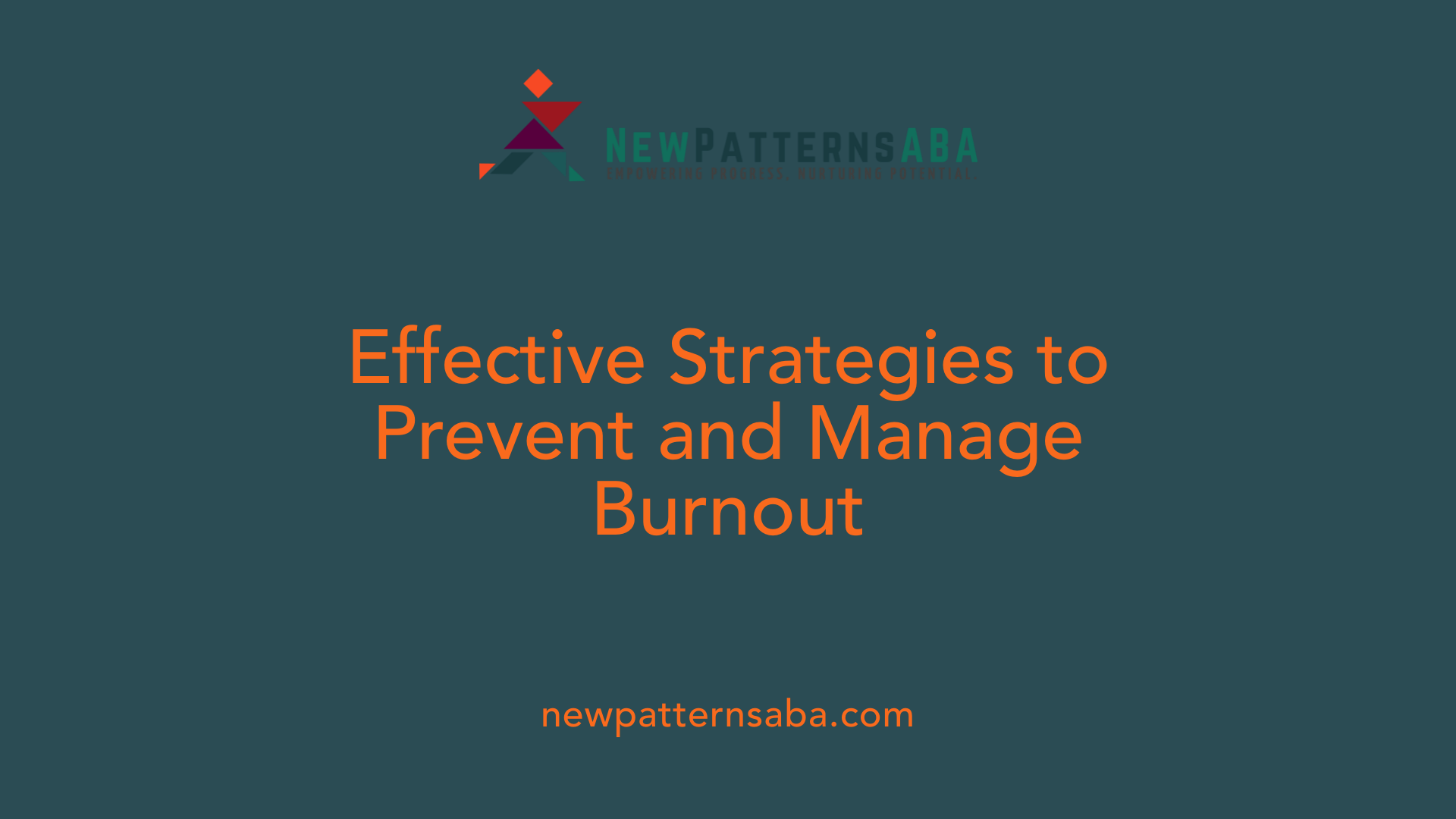
What strategies can help prevent autistic burnout?
Preventing autistic burnout requires proactive management of stressors and an understanding of personal needs. Establishing clear boundaries is vital; this means saying no to demands that exceed your capacity and prioritizing activities that restore energy. Recognizing early signs of overstimulation or fatigue allows for timely intervention, such as taking breaks or engaging in sensory soothing activities.
Practicing unmasking—being authentic and reducing the effort to hide autistic traits—can help conserve mental and physical resources. Using tools like energy accounting, which involves monitoring your energy levels and adjusting activities accordingly, supports sustainable daily routines. Creating sensory-friendly environments, whether at home or work, helps reduce overload and promote comfort.
Building connections within supportive communities or peer groups offers emotional validation and practical advice. Advocating for accommodations and promoting societal acceptance are broader measures that can lessen societal pressures. Ensuring adequate sleep, reducing demands, and engaging in activities that promote well-being—like hobbies or interests—are essential to maintain resilience and prevent “burnout.”
What methods are effective for supporting recovery from autistic burnout?
Recovery from autistic burnout focuses on resting, rebalancing, and gradually rebuilding capacity. The first step is to prioritize rest, ensuring ample sleep and taking regular breaks during daily activities. Engaging in calming, grounding sensory activities—such as gentle movement, meditation, or soothing environments—helps manage lingering overstimulation.
Honoring the need to be authentic and dropping masking behaviors conserve energy and reduce internal stress. Using tools like energy accounting can help set realistic boundaries and prevent overexertion. Designing a sustainable routine that respects personal limits involves planning activities thoughtfully, avoiding unnecessary demands, and scheduling self-care.
Seeking professional support, such as therapists familiar with autism, can provide strategies for managing stress and internalized ableism. Emphasizing self-acceptance, maintaining consistent sleep and nutrition habits, and engaging in activities that bring joy and fulfillment are key to long-term recovery. Overall, supporting recovery involves patience, self-compassion, and a focus on creating a life that aligns with your natural needs and strengths.
Resources and Support Networks
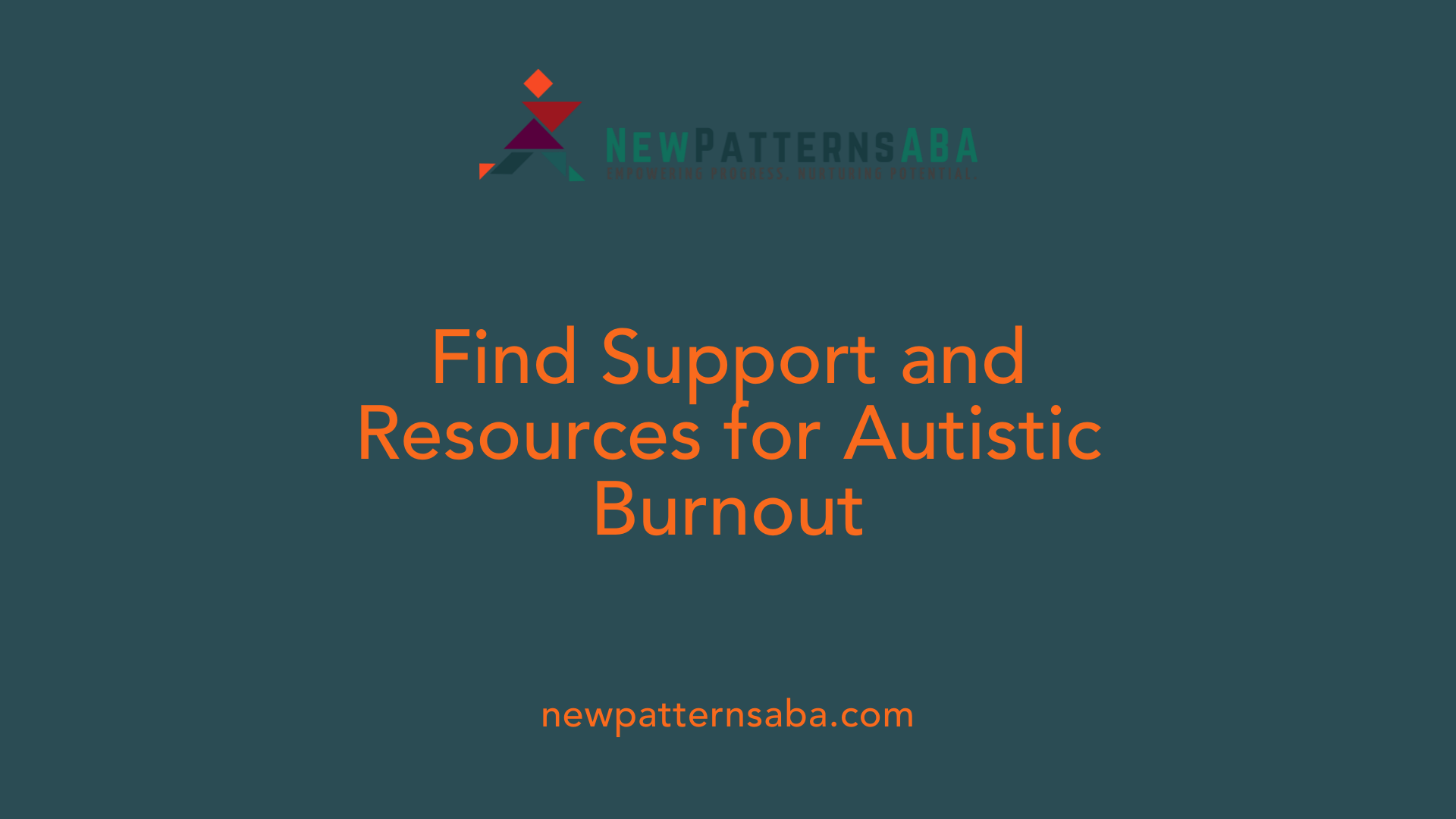 When it comes to managing autistic burnout, having access to reliable resources and a supportive network is essential. Individuals are encouraged to seek guidance from mental health professionals who are experienced in autism and neurodivergence. These experts can offer personalized strategies tailored to specific needs, such as sensory regulation techniques, unmasking support, and coping mechanisms.
When it comes to managing autistic burnout, having access to reliable resources and a supportive network is essential. Individuals are encouraged to seek guidance from mental health professionals who are experienced in autism and neurodivergence. These experts can offer personalized strategies tailored to specific needs, such as sensory regulation techniques, unmasking support, and coping mechanisms.
Support groups, both in-person and online, serve as valuable platforms for sharing experiences, exchanging practical tips, and gaining emotional reassurance. Communities like autism forums and social media groups often foster an environment of understanding where members discuss early signs of burnout, effective self-care routines, and ways to advocate for their needs.
Educational resources provided by reputable organizations play a crucial role in awareness and self-management. Organizations such as the Autism Self Advocacy Network and local neurodiversity groups offer guides, toolkits, and advocacy information. These materials emphasize recognizing fatigue early, setting boundaries, and seeking necessary accommodations at work or educational settings.
Self-advocacy is also vital. Learning to communicate one’s challenges and requesting reasonable adjustments can significantly reduce stressors that contribute to burnout. This includes clear discussions about sensory sensitivities, workload management, and flexible scheduling.
Practicing self-awareness and unmasking—being honest about one’s limits and needs—can prevent escalation. Engaging in sensory activities that are enjoyable, such as spending time in nature or participating in special interests, supports recovery. These activities help rebuild energy levels and reinforce a positive sense of identity.
In summary, a combination of professional guidance, community support, educational tools, and self-advocacy forms a comprehensive approach to managing and recovering from autistic burnout. These resources empower individuals to better understand their experiences, implement effective coping strategies, and foster environments that respect their neurodivergent needs.
The Importance of Education and Awareness
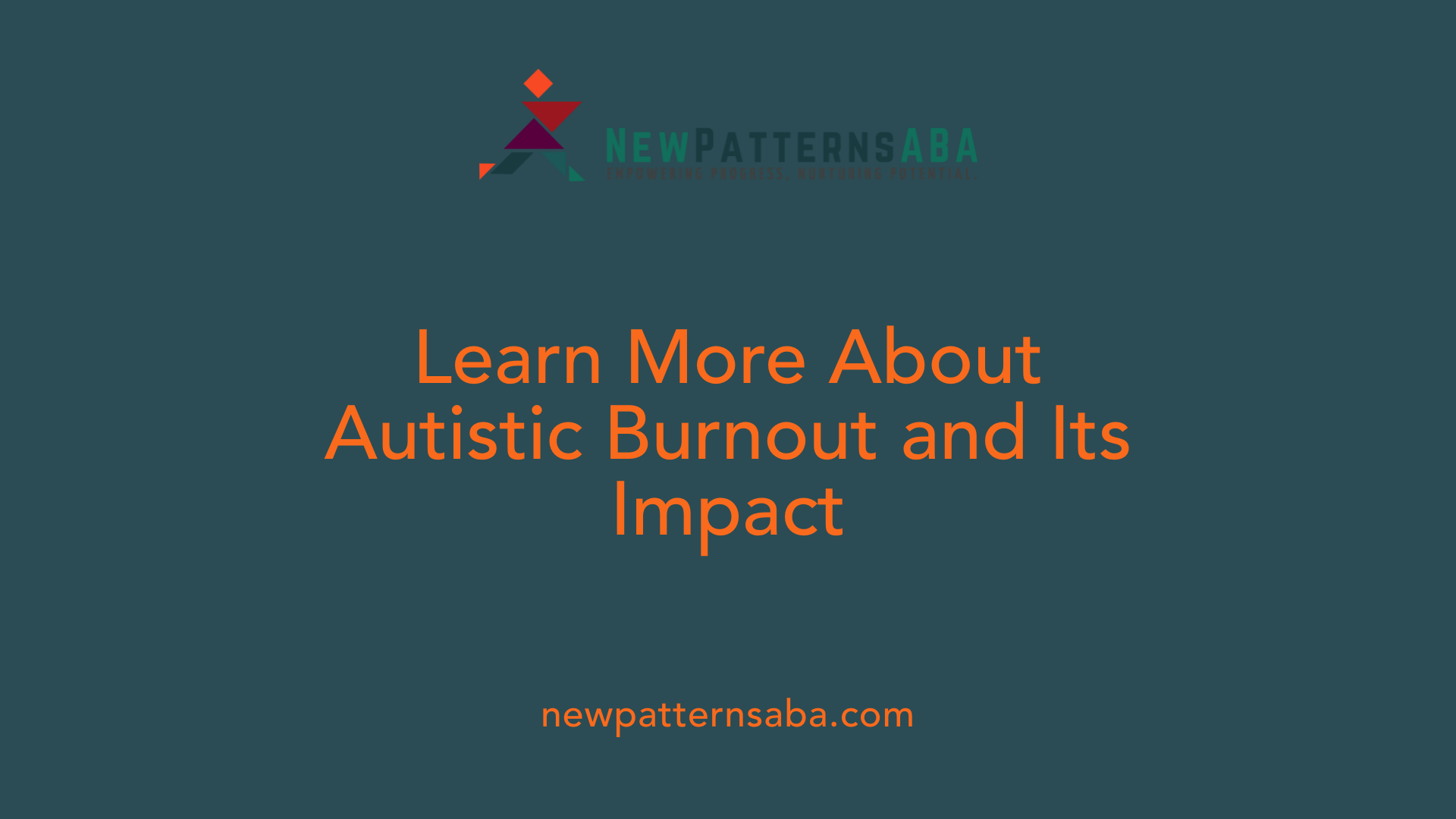
Why is educating about autistic burnout important?
Educating about autistic burnout is essential to fostering a better understanding of this complex and often misunderstood condition. It highlights how prolonged stress, sensory overload, and masking can lead to deep exhaustion, loss of skills, and sensory sensitivities. Recognizing these signs early can help individuals and their support systems respond effectively, preventing severe decline.
Increased awareness also reduces societal stigma and internalized ableism. When people understand that burnout is a result of external pressures and environmental demands, they are more likely to show empathy and provide appropriate accommodations. This understanding encourages self-advocacy and equips autistic people with tools to manage their well-being.
Furthermore, education empowers individuals with autism to better recognize their own triggers and adopt coping strategies such as seeking support, creating supportive environments, and setting boundaries. It paves the way for inclusive policies and environments that respect sensory needs and promote mental health.
Overall, widespread knowledge about autistic burnout leads to stronger support networks and a more compassionate society. It allows autistic individuals to thrive, improves their quality of life, and fosters environments where they feel safe, understood, and valued.
A Path Toward Recovery and Well-Being
Recognizing and understanding autistic burnout is vital for supporting affected individuals. By acknowledging its signs, causes, and distinctive features, communities and caregivers can foster environments that reduce stressors and promote health. Implementing effective prevention and recovery strategies—like sensory regulation, advocating for accommodations, and embracing self-acceptance—can help autistic people recover and thrive. Continued education and awareness are essential in dismantling stigma and supporting a society that values neurodiversity. With the right knowledge, support, and compassion, those experiencing burnout can rebuild resilience, restore their energy, and regain a fulfilling life.
References
- Autistic burnout: When navigating a neurotypical world ...
- How to Build a Recovery Plan for Autistic Burnout
- Recognizing Burnout in Autistic and PDA Individuals - MPG
- Understanding autistic burnout
- What Does Autism Burnout Look Like? How to Recognize It ...
- How do I Recover from Autistic Burnout?
- Step-by-Step Recovery from Autistic Burnout: What You ...
- Autism and ADHD Burnout Recovery
- Autistic Burnout Toolkit






